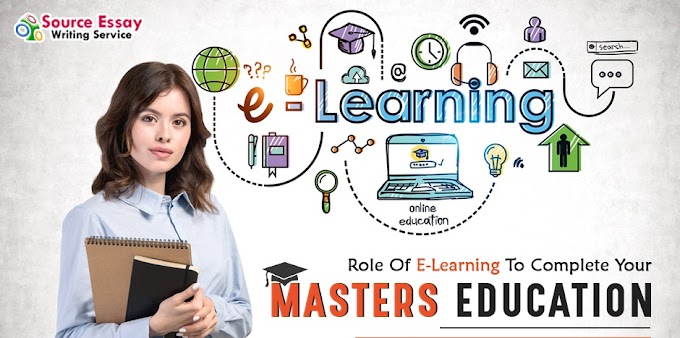Assignment Aiou Book Code 8601 Question No 4
Aiou Book Code 8601 Allama Iqbal Open University Assignment All Assignment
Q. NO 4 (I) Hightlight the Hunter,seven steps of lession arranging.
ANS:
Tracker fostered a seven stages model of example arranging. These means are related with the
direct guidance strategy and conduct change rehearses. The seven stages fall under four
classifications as follows
I) Getting Students Ready to Learn
1. Survey:- audit of earlier learning is important to prepare understudies to gain proficiency with the
new idea.
2. Defensive Set:- center consideration, gain interest – information and encounters of the
understudies about the new idea are evaluated. The educator associates the past
information and experience of the understudies to the new theme/idea.
3. Expressing the target:- most explicitly the destinations of the illustration are expressed by the
instructor.
ii) Instruction
Information and demonstrating:- the instructor presents guidelines to the class. He/she employments
various modes remembering the understudies' advantages and capacities. Different models from the
day to day existence encounters assist understudies with getting a handle on the new ideas.
iii) Checking for Understanding
1. Check for comprehension:- understudies gain proficiency with the illustration as per their own way of learning.
Educators check understudies understanding in the center and toward the finish of the example and choose
whether or not further explanation is required or which regions/focuses needs more explanation
either through showing material or through various methodologies. The educators use class
tasks for this reason
2. Directed practice (give criticism without reviewing):- an educator's comment on understudies' work is
extremely fundamental. It gives criticism to the understudies about their advancement, learning and
shortcomings, regions where improvement is required.
iv) Independent Practice
Free practice (for the most part for an evaluated task):- understudies' learning of new ideas is
routinely checked through proceeds with appraisal; for example month to month tests, quarterly tests. The
educators imprint and give grades to their work.
3) 5 E's of Lesson Planning Learning hypothesis of Constructivism expresses that students build
novel thoughts or ideas based on their current/past information. This model depends on the
objective, assemble assets, and give understudies a chance to investigate, fabricate, and
exhibit their learning. It moves the taking in climate from educator focused to student
focused.
The 5 E's Lesson Planning Model is frequently connected with constructivist learning plan. It
includes following 5 E's:
• Elaborate – the educators can upgrade understudies' information with the assistance of different models and
grow their insight by clarifying comparable ideas, and requesting that they apply it to other
circumstances. The learning of the new ideas likewise brings up issues identifying with different ideas lead
to new request.
• Investigate - understudies straightforwardly associated with material, go through the learning system to address the
issues. They work in a group to share the information.
• Draw in - understudies run over the material, characterize their inquiries, accomplish the essential work for their
class work, make associations among new and known thoughts, recognize the significant practices from
their regular routine.
• Clarify – the understudy gets a chance to clarify the learned ideas like disclosures,
cycles, and thoughts by composed/verbal tasks or through exploratory writing/projects. The
instructor supplies material, books/assets, gives input, upgrades jargon, and explains
confusions/wrong focuses assuming any.
• Assess – assessment of learning is an on-going (consistent) process. Both instructor and student
actually look at the comprehension of the ideas. Distinctive assessment procedures can be utilized, for example,
rubrics, agendas, instructor interviews, portfolios, issue based learning yields, and
evaluations results. Results are utilized to assess the understudies' advancement and to adjust
educational necessities later on.
Q NO 4 (ii) How is 5es model of example arranging not the same as the others demonstrates.
Ans :
The accompanying exemplary example arranging models are generally well known in illustration arranging. These are:
1) The 5 E's illustration arranging model
2) Gagne's edge work for informative turn of events,
3) Hunter's seven stages of illustration arranging
The 5 E's illustration arranging model :
5 E's of Lesson Planning Learning hypothesis of Constructivism expresses that students develop new
thoughts or ideas based on their current/past information. This model depends on the thoughts
of helpful learning. Instructors plan their guidelines/examples around the learning
objective, assemble assets, and give understudies a chance to investigate, fabricate, and
show their learning. It moves the taking in climate from instructor focused to student
focused.
The 5 E's Lesson Planning Model is regularly connected with constructivis learning plan. It
includes following 5 E's:
• Connect with - understudies go over the material, characterize their inquiries, accomplish the essential work for their
class work, make associations among new and known thoughts, recognize the pertinent practices from
their day to day existence.
• Investigate - understudies straightforwardly associated with material, go through the learning system to settle the
issues. They work in a group to share the information.
• Clarify – the understudy gets a chance to clarify the learned ideas like disclosures,
cycles, and thoughts by composed/verbal tasks or through experimental writing/projects. The
educator supplies material, books/assets, gives input, improves jargon, and explains
misguided judgments/wrong focuses assuming any
. • Elaborate – the educators can improve understudies' information with the assistance of different models and
extend their insight by clarifying comparative ideas, and requesting that they apply it to other
circumstances. The learning of the new ideas additionally brings up issues identifying with different ideas (lead
to new request).
• Assess – assessment of learning is an on-going (consistent) process. Both instructor and student
really take a look at the comprehension of the ideas. Distinctive assessment strategies can be utilized, for example,
rubrics, agendas, educator interviews, portfolios, issue based learning yields, and
appraisals results. Results are utilized to assess the understudies' advancement and to alter
educational requirements in future.
Gagne's casing work for educational turn of events :
A well known instructive clinician, Robert Gagne, recognized nine informative occasions that
support learning and that can be utilized in example arranging. These focuses are frequently utilized as a
structure for educational advancement by the instructors. Gagne's casing work center around the
procurement of scholarly abilities during guidance. The occasions of guidance are:
1-Providing freedoms to rehearse:- the instructors use models from the day to day existence and
give freedoms to reexamine/drill the new example. Now and again the instructors give class
work for the improvement in learning.
2-Informing students of the evenhanded:- express the goals of the illustration. Make the understudies
mindful of what they will realize.
3-Providing learning direction:- the educators utilize the sound and visual guides to make
a best learning climate.
4-Stimulating review of earlier learning:- to make connect with the past information,
the educator may poses inquiries to review the earlier learning.
5-Providing input (data concerning how to improve):- the work tasks of the
understudies are checked by the instructor and remarks are given. The understudies are asked to
right the work.
Tracker's Seven Steps Lesson Plan :
Tracker fostered a seven stages model of illustration arranging. These means are related with the
direct guidance technique and conduct change rehearses. The seven stages fall under four
classes as follows:
I) Getting Students Ready to Learn :
1. Audit:- survey of earlier learning is important to prepare understudies to become familiar with the new
idea.
2. Defensive Set:- center consideration, gain interest – information and encounters of the
understudies about the new idea are evaluated. The educator interfaces the past information and
experience of the understudies to the new theme/idea.
3. Expressing the target:- most explicitly
the destinations of the illustration are expressed by the educator.
ii) Instruction Input and displaying:-
the educator presents guidelines to the class. He/she utilizes various modes remembering the
understudies' inclinations and capacities. Different models from the everyday existence encounters help understudies to
handle the new ideas.
iii) Checking for Understanding :
1. Check for comprehension:- understudies become familiar with the example as per their own way of learning.
Educators check understudies understanding in the center and toward the finish of the example and choose
whether or not further explanation is required or which regions/focuses needs more explanation
either through showing material or through various procedures. The educators use class
tasks for this reason 2. Directed practice (give input without evaluating):- a
instructor's comment on understudies' work is extremely fundamental. It gives criticism to the understudies about
their advancement, learning and shortcomings, regions where improvement is required.
iv) Independent Practice :
Free practice (generally for a reviewed task):- understudies' learning of new ideas is
routinely checked through proceeds with evaluation; for example month to month tests, quarterly tests. The
educators imprint and give grades to their work.














0 Comments